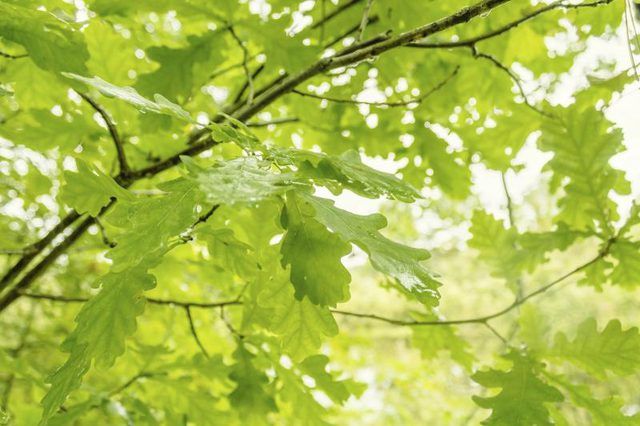Bulbs
Flower Basics
Flower Beds & Specialty Gardens
Flower Garden
Garden Furniture
Garden Gnomes
Garden Seeds
Garden Sheds
Garden Statues
Garden Tools & Supplies
Gardening Basics
Green & Organic
Groundcovers & Vines
Growing Annuals
Growing Basil
Growing Beans
Growing Berries
Growing Blueberries
Growing Cactus
Growing Corn
Growing Cotton
Growing Edibles
Growing Flowers
Growing Garlic
Growing Grapes
Growing Grass
Growing Herbs
Growing Jasmine
Growing Mint
Growing Mushrooms
Orchids
Growing Peanuts
Growing Perennials
Growing Plants
Growing Rosemary
Growing Roses
Growing Strawberries
Growing Sunflowers
Growing Thyme
Growing Tomatoes
Growing Tulips
Growing Vegetables
Herb Basics
Herb Garden
Indoor Growing
Landscaping Basics
Landscaping Patios
Landscaping Plants
Landscaping Shrubs
Landscaping Trees
Landscaping Walks & Pathways
Lawn Basics
Lawn Maintenance
Lawn Mowers
Lawn Ornaments
Lawn Planting
Lawn Tools
Outdoor Growing
Overall Landscape Planning
Pests, Weeds & Problems
Plant Basics
Rock Garden
Rose Garden
Shrubs
Soil
Specialty Gardens
Trees
Vegetable Garden
Yard Maintenance
What Is Eating the Leaves on Our Oak Trees?
What Is Eating the Leaves on Our Oak Trees?. The oak tree (Quercus spp.) represents one of North America’s most impressive native trees. Few trees exhibit such size, strength and longevity. Depending on the species, oaks may be hardy in U.S. Department of Agriculture plant hardiness zone 3 through 10. Though oaks look invincible, they are...

The oak tree (Quercus spp.) represents one of North America’s most impressive native trees. Few trees exhibit such size, strength and longevity. Depending on the species, oaks may be hardy in U.S. Department of Agriculture plant hardiness zone 3 through 10. Though oaks look invincible, they are troubled by several leaf-eating larvae. Identifying the pest properly and meeting your tree's cultural needs helps minimize defoliation and long-lasting damage.
Forest Tent Caterpillar
Forest tent caterpillars are North American natives that feed on the leaves of hardwood trees, including oaks. The caterpillar is approximately two inches long, hairy and brownish-grey in color. A fine blue line runs along each side of the body, and characteristic white footprint-shaped markings run down the center of its back. Damage done by the pest appears as holes in the leaves, similar to what would be caused by a gunshot. Leaves give a tattered appearance to heavily infested trees. Healthy oaks withstand a year or two of defoliation. After that, stunted growth and some branch death may occur if left untreated.
Gypsy Moth Caterpillar
Unlike the forest tent caterpillar, gypsy moth caterpillars are not native to North America. They are hairy and may grow to be three inches long. The pattern on this caterpillar's back distinguishes it from other pests. Behind its black and yellow head are five pairs of blue spots followed by six pairs of red spots. Young caterpillars produce shot hole damage. Late-stage caterpillars consume entire leaves and can totally defoliate a tree. Gypsy moth caterpillars prefer oak leaves to all others. Healthy oak trees can usually withstand one year of defoliation. Two or more consecutive years of damage place undue stress on the tree, increasing the likelihood of death without intervention.
Oak Leaftier Caterpillar
Oak leaftier caterpillars are quite small, measuring only half an inch in length. They are greenish-yellow in color and have a dark brown head. These are one of the caterpillars frequently seen suspended from oak trees by silk threads. Affected leaves will be deformed, sparse and full of holes. Healthy oak trees can usually survive two to three successive years of defoliation. If infestations persist, treatment may help prevent branch death.
Oak Leafroller Caterpillar
The oak leafroller caterpillar is a native pest that periodically defoliates oak trees. The pest is approximately 1.2 inches long and is commonly known as the inchworm. It has a black head and a body that can be various shades of green. The caterpillars roll individual leaves to form enclosures which they use when not feeding. Leafroller caterpillars rarely cause major defoliation and are more of a nuisance than anything else. Treatment is not needed for healthy trees.
Scarlet Oak Sawfly
The larvae of the oak sawfly wasp feed on oak leaves. Scarlet oak sawfly larvae are dark green to black in color and measure 1/2 inch in length. They have a slimy coating that helps them adhere to the oak leaves. The larvae feed from the underside of the leaves, eating everything except the veins and a thin layer of upper leaf tissue. The extent of defoliation ranges from spotty to complete and is usually not fatal unless a tree is young or severely stressed.
Minimizing Damage
Tree health is the most important line of defense against oak leaf damage. In general, oaks flourish in full-sun locations with well-drained soil kept slightly dry. Early intervention limits caterpillar damage. Tolerate minor damage, but handpick caterpillars on small trees. Mature trees may need professional intervention due to size. The microbial insecticide Bacillus thuringiensis (Bt) kills caterpillars two to three days after they eat treated leaves. Mix 4 teaspoons of Bt concentrate per 1 gallon of water in a pressurized sprayer. Spray all the leaf surfaces until wet, but not to the point of runoff. Repeat the treatment in two weeks. Wear gloves, safety goggles and protective clothing to limit exposed skin when you mix and spray.